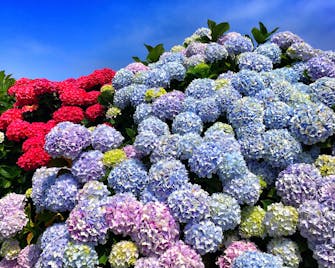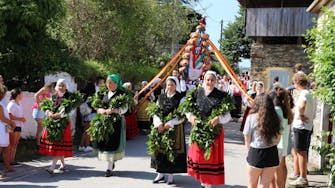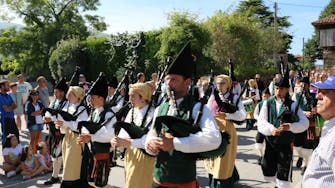The Hydrangeas (Hortensias)
Flowers of Cadavedo (I)
It is the flower of Cadavedo par excellence, there are everywhere, of all colors, although white predominates. Its technical name is Hydrangea and they say it comes from Asia, although it is unknown who brought the first hydrangeas to Cadavedo. It is a plant that needs a lot of water, but not puddle, good drainage and moderate climate, neither too cold nor too hot, that is, Asturias is its perfect habitat. Everybody takes care of them and each person who asks how does they get so beautiful hortensias, will tell you a different method: some prune them in October, others in January, somebody say they are better in semi-shade, others say less. But everyone tries to make them big and pretty for the summer, which is when more people visit us. In any case, the flowers appear between May and October and, according to experts, depends on whether you prune them, around October or around January.
It seems that, depending on the acidity of the soil, the Hydrangea adopts one color or another. The most common are white, blue and pink, although you can force intermediate colors of hydrangea by adding some elements to the ground or even mixed or mixed flowers.
Blue is obtained in more acid soils, so potassium sulfate, ammonium sulfate or ammonium nitrate is added. In more alkaline soils, which are the most common in our area, the flowers turn white; and in soils with an intermediate pH (around 6) is when more pink colors come out.
If you want to take a hydrangea as a souvenir of your trip to Asturias, they reproduce very easily, a single cane is enough to plant it in a pot that you have to water very well, remember, without puddling ... and you will have a live piece of Cadavedo in your balcony.
Photos by Paloma F. Garrido
La Regalina Event
Every last Sunday of August, Cadavedo celebrates its main festival, which is La Regalina. It is one of the most important cultural events in Asturias. Mainly, it is a folklore festival that has been invariably celebrated since 1931. A La Regalina attends groups of choirs and dances from all over the province with their regional costumes, bring their Typical dances and their bands of bagpipes.
The event has several parts, but one of the most beautiful is the parade. It leaves at 11am from the upper part of Cadavedo, the Rapa neighborhood and more than 1,000 people dressed in regional costumes, dance groups and bagpipes bands participate in it. Intercalated among them are the country's cars adorned with garlands of hydrangeas and laurels. The local people also usually dress that day with the regional costume. Another essential element of the parade is the bouquets of alfiladas, which are traditional Cadavedo buns and make up the offering to the Virgin of La Regalina. It is a music and color show that is worth seeing.
The parade ends at the hermitage of La Regalina, on the edge of the sea. There the recitation is recited, written in falietsa, local language, which today is not commonly used, but is used in literature and, in particular, in poetry.
After the proclamation, there is Mass, procession and the traditional dance of the Prima Dance, which is executed by a hundred people from the town. Next exhibition of regional dances in a magical setting at the edge of the sea, which gives rise to one of the most beautiful events that can be seen throughout the year in Asturias.


